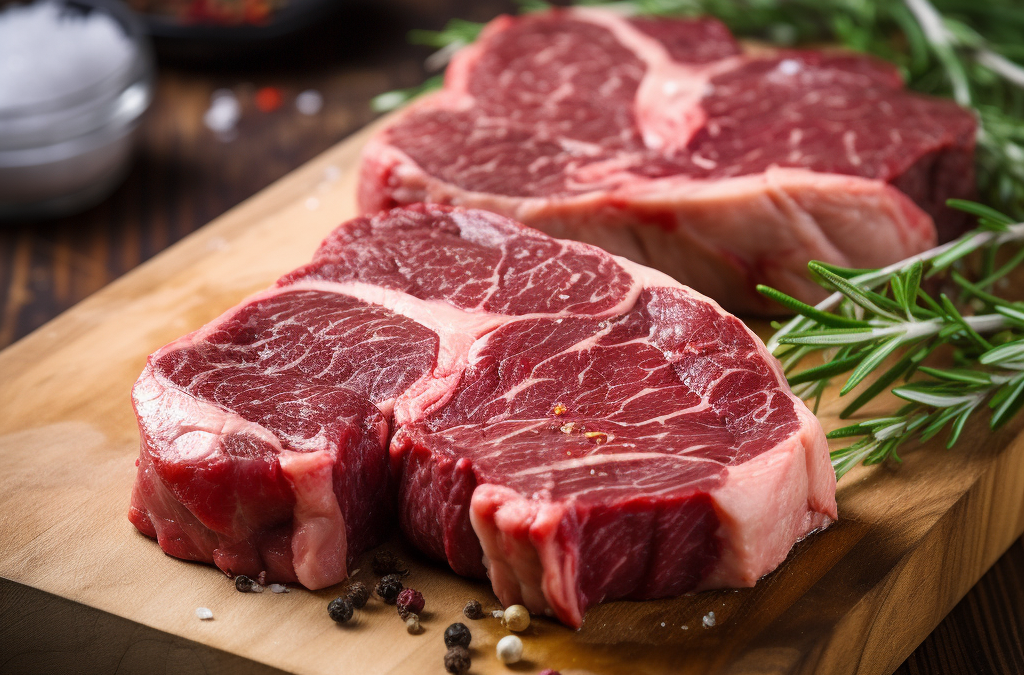Marbling is a hallmark of quality in beef, often heralding a superior taste and tenderness that connoisseurs and everyday consumers seek. When selecting the finest cuts of meat, understanding the nuances of marbling and texture is paramount. This knowledge enhances the culinary experience, and guides informed purchasing decisions. Whether you’re a chef aiming to impress with a succulent steak, a butcher curating top-tier products, or a home cook eager to elevate your meals, grasping these concepts is essential. In this comprehensive guide, we will delve into the intricacies of beef marbling and texture, explore how they impact beef quality, and offer practical advice for selecting and preparing beef to perfection.
Understanding Marbling in Beef
Marbling, characterized by the intricate web of fat within beef muscle, plays an essential role in the culinary quality of meat. These flecks of intramuscular fat are not merely aesthetic; they imbue the beef with moisture, richness, and a tender texture upon cooking. Recognized as a hallmark of excellence, marbling is a sought-after trait by culinary experts and enthusiasts who prize a superior taste experience.
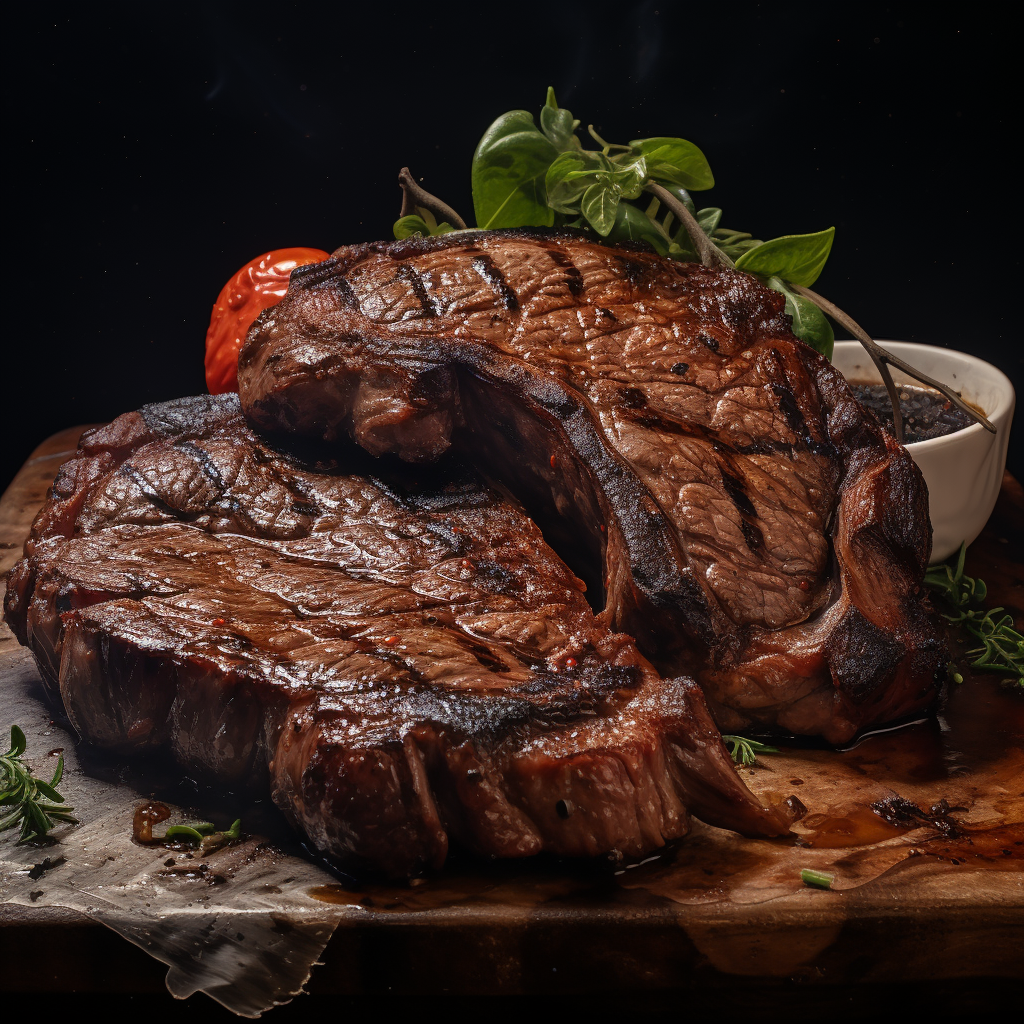
In the heart of Texas, where the art of beef production is steeped in tradition, marbling stands as a testament to quality. The region’s unique climate, cattle breeds, and specialized feed contribute to the development of marbling, reflecting the environmental and genetic factors that shape the meat’s character.
Observing a slice of a premium steak reveals the diversity of marbling, which can differ dramatically across various cuts and individual animals. This variability underscores the importance of marbling as an indicator of the animal’s lineage, diet, and overall welfare. As we delve deeper into the nuances of marbling, we will uncover its profound impact on the sensory attributes of beef and how it synergizes with the meat’s texture to elevate the gastronomic experience.
Defining Marbling
Marbling is the term for the fine strands of fat woven within the lean portions of beef. This internal fat is distinct from the more visible external fat, presenting as delicate threads or speckles that lace the muscle fibers. The presence of this fat, typically white or cream in hue, enhances the meat’s visual appeal and significantly elevates its quality.
Factors such as breed, genetic makeup, age, diet, and even pre-slaughter handling can affect the degree and pattern of marbling. Breeds like Wagyu and Angus are renowned for their naturally abundant marbling.
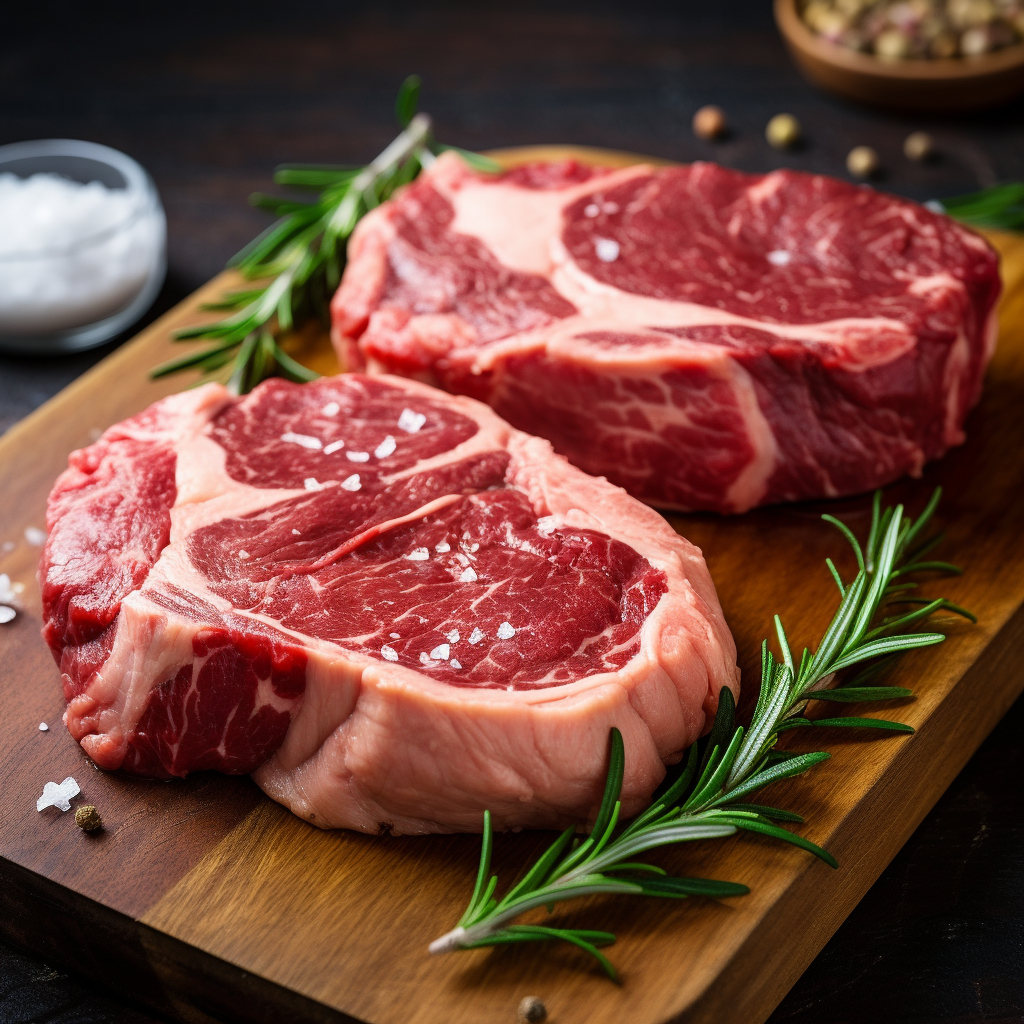
It’s important to distinguish marbling from the larger fat deposits found between muscle groups, known as intermuscular fat, or the external fat cap often seen atop steak cuts. The USDA’s beef grading system places a premium on the fineness and uniformity of marbling, using it as a key metric in assigning grades like Prime, Choice, and Select. These designations hint at the beef’s inherent potential for a flavorful and juicy experience.
Marbling is a product of nature and a reflection of meticulous husbandry. For instance, Texas beef’s reputation for exceptional marbling arises from regional cattle-raising practices that emphasize the cultivation of this desirable trait.
Marbling’s Impact on Flavor and Tenderness
Marbling in beef is not merely a visual delight but a herald of the rich and savory experience that awaits the palate. As the marbled fat weaves through the muscle, it melts into the meat during cooking, imparting a luscious flavor profile and a tenderness that is the hallmark of high-quality beef. The fatty acids within this marbling contribute to the complexity of the beef’s flavor, setting it apart from leaner counterparts that may need to catch up on taste and succulence.
The tenderness of marbled beef is unparalleled; as the internal fat renders, it bathes the surrounding muscle fibers, softening them in a way that no artificial tenderizer can replicate. This natural tenderization ensures that even when cooked to higher degrees of doneness, the beef remains moist and tender, a boon for those who eschew rarer meats. The heat distribution facilitated by the melting fat also aids in achieving an even cook, making high-temperature cooking methods like grilling ideal for these cuts, ensuring a perfect sear without compromising the juicy interior.
In essence, marbling is a crucial factor that enhances beef’s sensory and textural qualities, transforming it into a culinary delight. Recognized as a premium attribute, marbling is the confluence of genetic factors and careful rearing, culminating in a product of exceptional quality. Click here to order steak online now.
Recognizing Quality Beef Texture
Discerning the texture of the beef is pivotal in evaluating its quality, with a direct impact on the satisfaction derived from every bite. The ideal texture strikes a balance, being tender enough to offer little resistance to the teeth yet maintaining a firmness that signifies well-structured meat. Evaluating this characteristic involves examining the beef’s grain, the consistency of its firmness, and ensuring it presents a moist sheen without tipping into the realm of being wet or slippery.
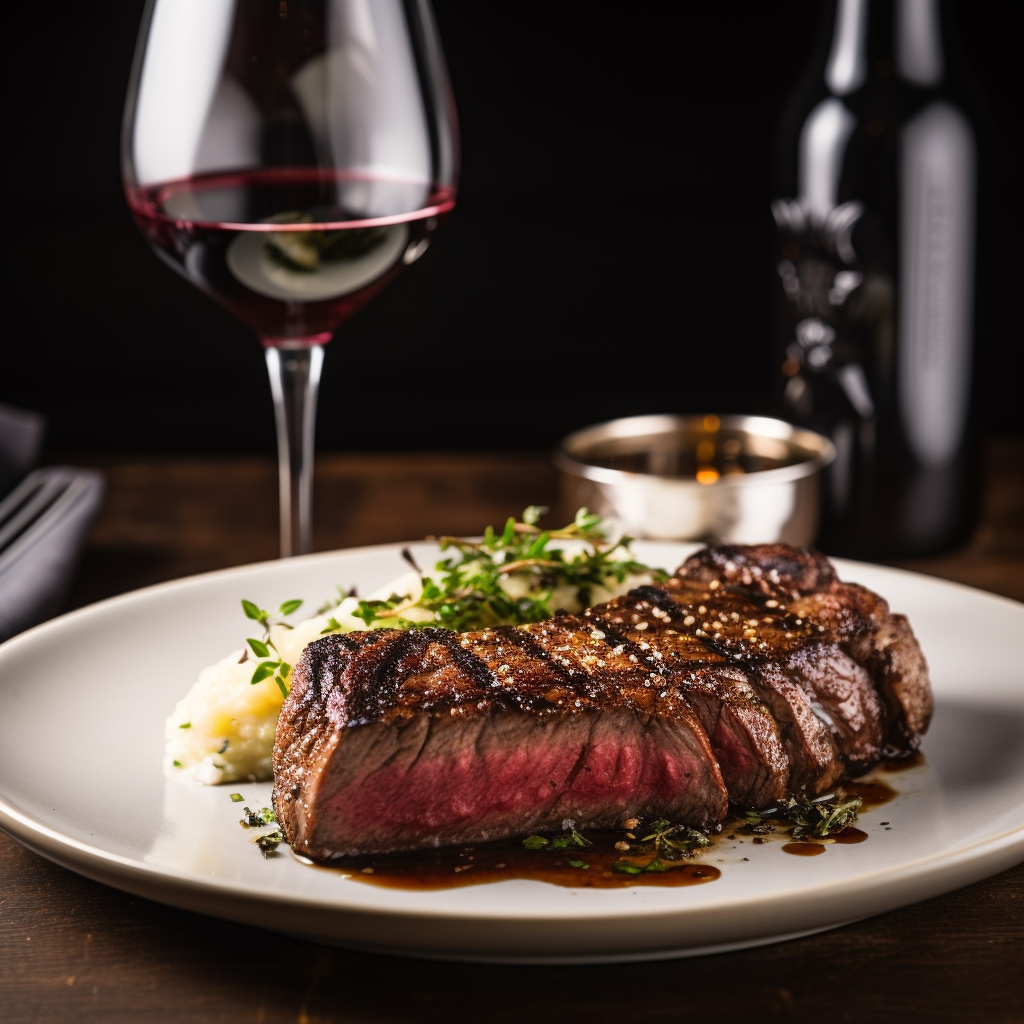
The texture is shaped by various factors, including the animal’s age, the specific muscle’s activity level, and the cut’s origin on the carcass. For instance, cuts from less exercised muscles typically exhibit a more tender texture due to reduced connective tissue. The aging process, both during the animal’s life and after harvest, is also instrumental, as enzymes break down the proteins within the muscle fibers, enhancing tenderness—a critical consideration for connoisseurs and chefs alike.
A closer look at the meat’s surface can reveal much about its texture; a fine grain often indicates a smoother mouthfeel, while a coarser texture might suggest a chewier experience. The beef’s texture must be uniform, without any tough sinews or inconsistent fiber densities that could detract from the meal’s enjoyment.
While marbling contributes to a juicy and tender bite, it is not the sole factor in determining texture. Even cuts with modest marbling can exhibit superior texture when properly aged and prepared. Thus, when selecting a cut of beef, it is just as important to consider the texture as it is to appreciate the marbling, as both play significant roles in defining the overall quality and identity of the beef.
Texture Characteristics and Assessment
Exploring the nuances of beef texture requires a discerning eye and a sensitive touch. The texture is a testament to the meat’s fibrous composition, and its quality can be gauged through sight and touch. When evaluating texture, the grain, firmness, and springiness are key indicators.
The meat’s grain, which reveals the alignment and size of muscle fibers, is a telltale sign of tenderness. High-quality cuts boast a uniform and fine grain, suggesting a buttery tenderness upon consumption. Conversely, a coarse grain often denotes a chewier bite. A simple test involves gently teasing apart the fibers; a delicate and enjoyable texture is likely if they yield easily.
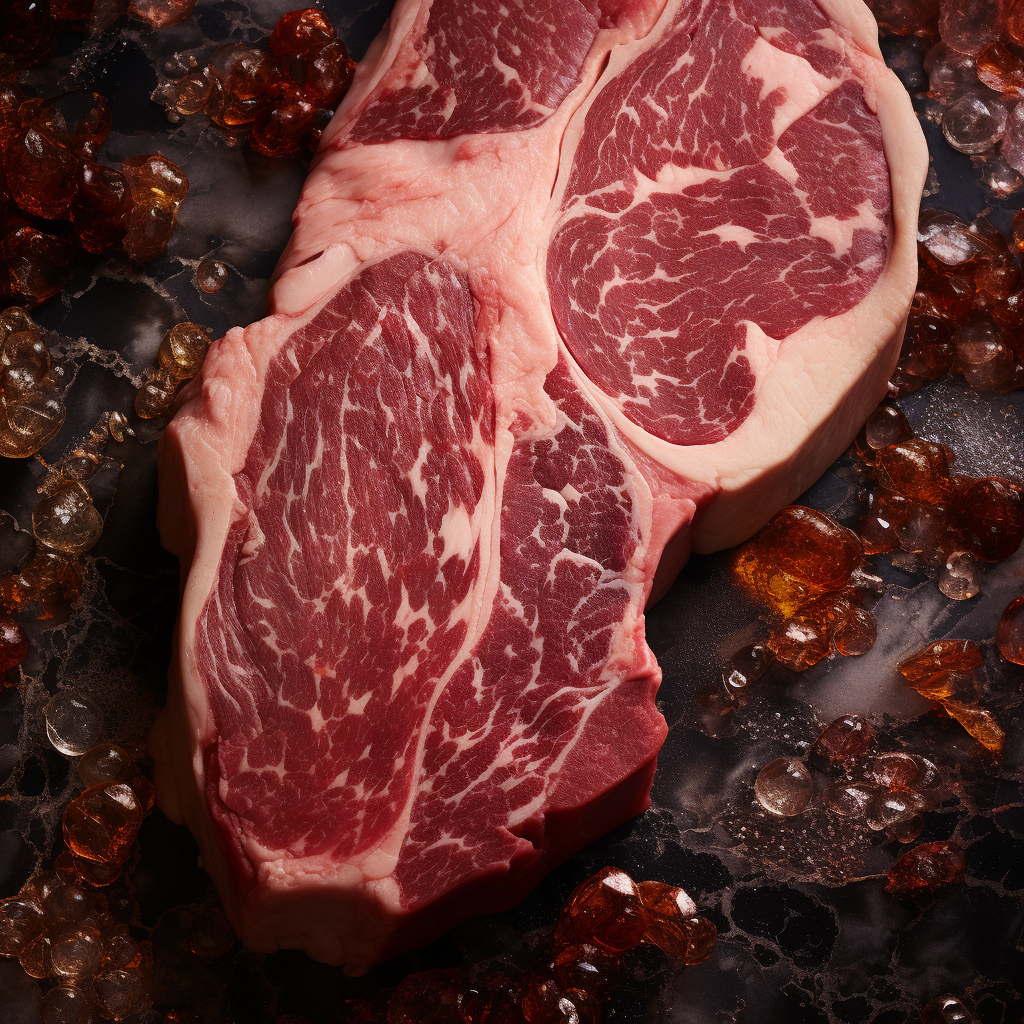
Firmness is another crucial factor, discerned by the meat’s resistance against gentle pressure. It’s a delicate balance: the meat should offer a satisfying resistance without being unyieldingly tough. This tactile cue hints at the cut’s chewiness and potential juiciness.
Springiness measures the meat’s elasticity—its ability to bounce back after being pressed. Ideal beef will have a noticeable, yet not excessive, level of springiness, indicating a juicy cut that isn’t overly dense or spongy.
The visual examination also plays a role in assessing texture. A consistent color throughout the cut can signal uniform muscle density and a consistent texture. Moreover, the visibility of connective tissue and how fat is woven through the muscle fibers can foreshadow the cut’s succulence and mouthfeel, with evenly distributed fat often equating to a superior texture.
While professional meat graders and seasoned butchers have a refined technique for evaluating these aspects, even novices can develop an eye for quality. Assessing texture is the art of synthesizing various sensory inputs to anticipate the enjoyment of each bite.
By becoming familiar with the intrinsic properties that influence beef texture, consumers can hone their selection process to ensure their culinary endeavors are met with exceptional results.
Assessing Beef Quality: Marbling and Texture
The journey to discerning beef quality is comprehensive, intertwining the visual allure of marbling with the tactile appeal of texture. A thorough evaluation considers how intramuscular fat weaves through the muscle fibers, creating a mosaic that promises flavor and tenderness.
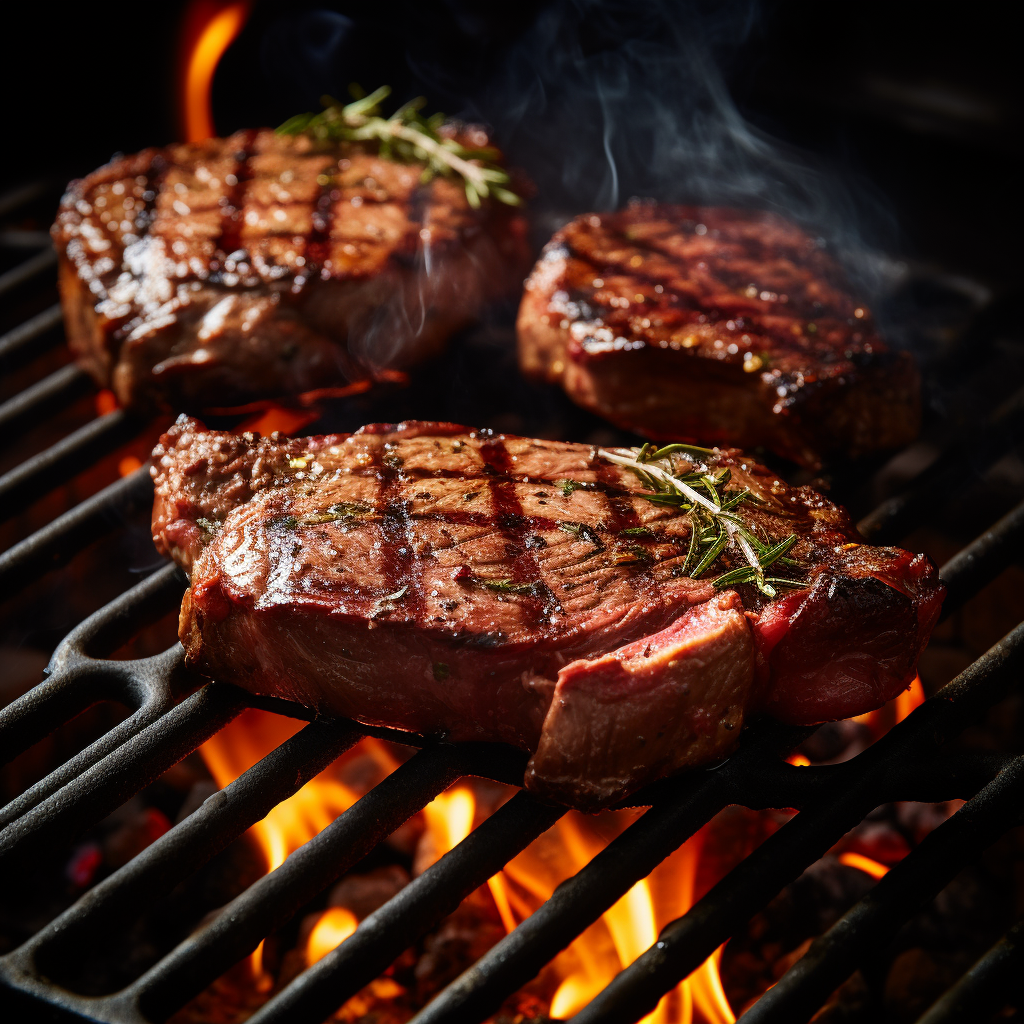
The marbling’s pattern and density can be initially appraised through established grading systems, such as those by the USDA, which categorize beef into tiers like Prime, Choice, or Select. This visual assessment is a preliminary gauge of the meat’s potential for richness and succulence.
Yet, the story continues after marbling. The meat’s firmness and elasticity offer additional layers of insight. A hands-on approach—feeling for the meat’s give and texture—can reveal much about its chew and how it might grace the palate.
It’s also essential to consider how the cut’s characteristics align with the intended culinary preparation. For instance, less marbled cuts can still triumph in the kitchen when paired with the proper cooking techniques that tenderize and build flavor.
Furthermore, the animal’s age, the carcass’s condition, and post-slaughter handling can sway marbling and texture. When done correctly, aging can heighten tenderness and intensify the meat’s inherent flavors, influencing the overall quality assessment.
When evaluating beef, it’s imperative to weave together the visual splendor of marbling with the tangible qualities of texture. This holistic approach enables consumers and vendors to select beef that meets their standards and promises a memorable culinary experience.
The Interplay Between Marbling and Texture
Delving into the intricate dance between marbling and texture unveils a deeper appreciation for beef quality. Marbling, those delicate streaks of fat meandering through the muscle, enriches the flavor profile and plays a pivotal role in tenderness. As the beef cooks, this fat gently melts, basting the muscle fibers from within, which elevates each morsel to a luscious tenderness. In contrast, texture encompasses the tactile experience of the meat, from its grain to its level of chewiness, attributes shaped by the muscle’s activity and the cut itself.
While both marbling and texture are tenderness ambassadors, their contributions are distinct. Marbling acts molecularly, softening the meat as the fat renders, whereas texture is a tactile affair influenced by the muscle’s physical structure and connective tissue. Achieving harmony between these elements is crucial; excessive marbling may not compensate for a rough texture, and conversely, a cut with minimal marbling can still delight the palate if its texture is sublime.
The quest for premium beef hinges on finding this equilibrium. A richly marbled yet tough cut may fall short of expectations unless it’s cooked with a technique that tenderizes. Conversely, a cut with modest marbling but superior texture can surprise with tenderness when prepared with care.
Pursuing beef that embodies the perfect marriage of marbling and texture can elevate the culinary experience to new heights. This confluence is what culinary experts, from chefs to butchers, strive to pinpoint as they curate their selections, ensuring each cut is tailored to its culinary destiny.
Understanding the nuanced interplay of marbling and texture enhances one’s grasp of meat quality and sharpens the acumen for discerning meat selection, a cornerstone for any connoisseur of fine beef.
Grading Beef by Quality Indicators
The grading of beef is a systematic approach to appraising meat based on key quality markers, including the presence of marbling and the meat’s overall texture. This framework aids both consumers and merchants in distinguishing the caliber of beef on offer, paving the way for enlightened purchasing choices. In the United States, the USDA’s grading standards are upheld by seasoned inspectors, though participation in the grading process is not mandatory.
Within the USDA’s grading scale, categories like Prime, Choice, and Select reflect varying degrees of marbling and tenderness. With its generous marbling, Prime is synonymous with tenderness and rich flavor, gracing the tables of fine dining establishments. With moderate marbling, Choice still promises a delectable experience and is versatile across cooking styles. With scant marbling, select is a more economical option that may require moist cooking techniques to enhance tenderness.
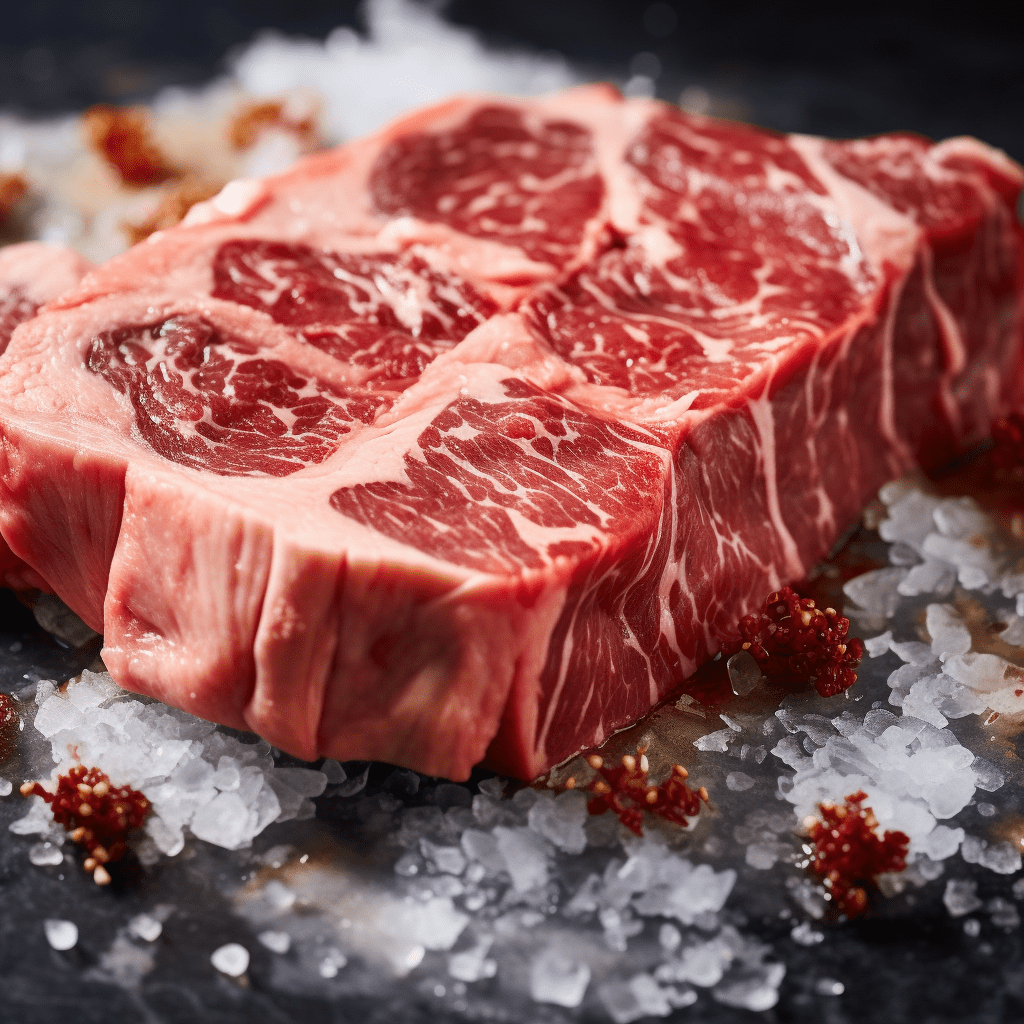
Beyond marbling, the grading process also considers the beef’s maturity—indicative of the animal’s age—and the meat’s color, which can signal freshness and proper handling. The age factor is crucial as it often correlates with a tougher and more pronounced texture, influencing the tenderness and the overall perception of the beef’s quality.
Additional grading dimensions include Yield Grades, which focus on the proportion of usable meat relative to fat and bone, and certifications like Angus Beef, which assure adherence to specific breed characteristics.
While not definitive in determining quality, these grading systems offer a robust guide to the intrinsic properties that affect beef’s marbling and texture. They act as a shorthand for buyers to predict the culinary experience and align their choices with their gastronomic intentions or customer expectations.
In sum, a thorough comprehension of these grading standards and their connection to beef’s inherent attributes can equip both commercial clients and individual consumers with the insight to select cuts that resonate with their culinary aspirations.
Selecting the Best Beef: Tips for Consumers
When embarking on the quest for the finest beef, a grasp of marbling and texture is just the beginning. There are several other factors that savvy consumers should consider to ensure they bring home the choicest cuts.
Understanding the various beef cuts is crucial. Each cut comes with its own set of characteristics that influence its culinary qualities. For example, a tenderloin is inherently more succulent than a round cut, a distinction that holds irrespective of the level of marbling. Knowing the optimal cooking techniques for each cut can significantly enhance the meat’s inherent virtues.
The freshness of the meat is another key consideration. Look for beef with a vibrant, cherry-red hue when freshly cut and exposed to oxygen (unless it’s vacuum-sealed), which should feel slightly moist but not overly so, suggesting it has been handled and stored with care.
The time of year and local availability may also affect beef quality. Opting for locally sourced beef during peak seasons can lead to a fresher, more delectable product, often due to shorter transportation times and reduced animal stress.
Moreover, certifications and labels offer insights into the beef’s quality. Beyond USDA grades, look for indications of grass-fed, organic, or sustainably farmed beef. These certifications can hint at the animal’s diet and environment, contributing to the meat’s flavor and texture profile.
Cultivating a relationship with a reputable butcher or meat vendor can be invaluable. They can shed light on the provenance and attributes of their offerings, guide marbling, texture, and grading, and tailor recommendations to your personal taste or specific recipes.
With these insights, consumers can broaden their horizons when choosing beef, leading to purchases that gratify the palate and the plate.
Visual Inspection and Label Interpretation
A discerning eye is vital when selecting top-tier beef. Begin by scrutinizing the meat’s color; a consistent, bright red suggests a fresh cut that has been properly oxygenated. The fat should have a creamy white or slight yellow tint, indicative of a healthy, well-nourished animal and a precursor to excellent marbling.
Evaluating marbling is another pivotal step. The best cuts feature a delicate web of intramuscular fat, promising a succulent and flavorful result post-cooking. While assessing firmness and texture might be less noticeable, the meat should have a moist appearance without being overly wet or parched. It should be devoid of blemishes or discoloration that could impair its flavor or mouthfeel.
Interpreting labels is just as critical. Familiarize yourself with USDA quality grades such as Prime, Choice, or Select, which reflect the degree of marbling. For those with specific dietary inclinations, grass-fed, organic, or natural terms can shed light on the rearing and feeding practices, influencing the beef’s ultimate quality and flavor profile.
Labels may also reveal details about the packaging process. For instance, vacuum-sealed packaging can help maintain the beef’s freshness and color, while terms like wet-aged or dry-aged indicate the aging method used to intensify the beef’s flavor and tenderness.
By coupling visual cues with a thorough understanding of labeling, consumers can infer a wealth of information about the beef before it enters their kitchen. This informed approach enables them to make choices more likely to meet their culinary expectations.
The Importance of Source
The provenance of beef is a critical factor influencing its marbling, texture, and overall quality. The beef’s attributes are shaped by the cattle’s diet, living conditions, and the stress levels they experience throughout their lives.
Beef sourced locally is often synonymous with superior freshness compared to its imported counterparts, mainly due to reduced transit times. This proximity to the market typically means less reliance on preservatives, which can positively affect the meat’s flavor and texture.
The cattle’s diet is paramount in defining the quality of the beef. For instance, grain-fed cattle are known to produce beef with pronounced marbling, equating to a more succulent flavor and a tenderer bite. On the other hand, beef from grass-fed cattle tends to be leaner, with a unique flavor profile that some liken to a wilder taste, accompanied by a more robust texture. Grain-finished beef offers a compromise, providing a blend of flavor and texture that appeals to various palates while also delivering certain health advantages.
Farming practices that prioritize animal welfare and sustainable agriculture contribute to the overall ethos of ‘source.’ Cattle that are raised ethically, with ample space to graze and minimal stress, yield beef that is generally superior in quality, exhibiting enhanced natural texture and flavor nuances.
For those consumers who place a premium on traceability, certifications such as Certified Angus Beef or endorsements from the American Grassfed Association can offer insights into the origins of beef and the methodologies employed in cattle rearing.
By valuing the source of their beef, consumers are empowered to make choices that satisfy their taste and texture preferences and resonate with their ethical and environmental principles.
Maximizing Beef Quality Through Cooking
The culinary techniques employed in cooking beef are pivotal in bringing out the best in the meat’s inherent qualities. A deep understanding of how heat affects the meat’s internal structures is essential to achieving culinary excellence.
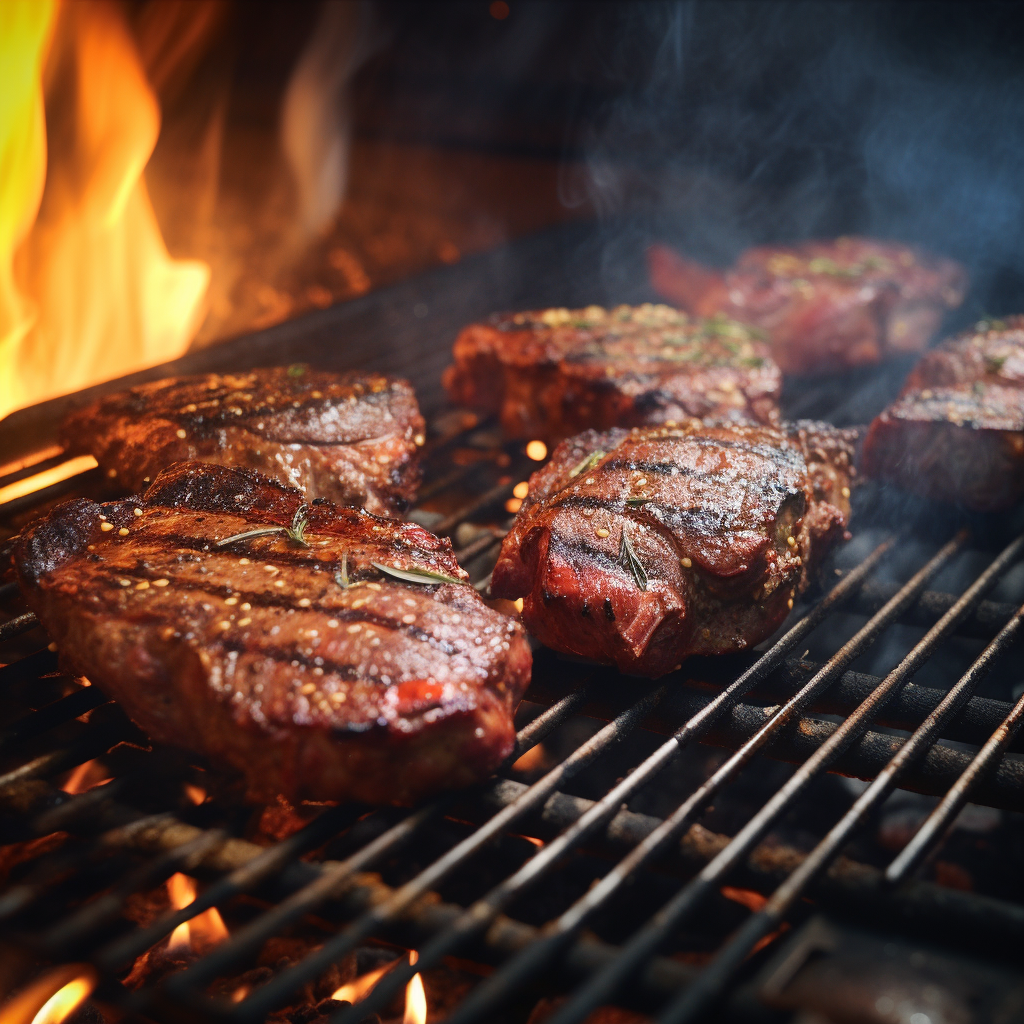
Each cut of beef thrives under specific cooking methods. For instance, cuts rich in marbling are prime candidates for high-heat methods like grilling or pan-searing, which allow the fat to melt and imbue the meat with rich flavors. Conversely, leaner cuts can be transformed by low-and-slow cooking techniques such as braising, which tenderizes the meat by gently breaking down its tougher components.
The importance of resting the meat post-cooking cannot be overstated, as it allows the redistribution of juices, ensuring each bite is moist and flavorful. Moreover, carving the meat against the grain shortens the fibers, yielding a more tender chew.
Utilizing a meat thermometer to monitor internal temperatures is key to achieving the perfect doneness and avoiding the pitfalls of overcooking. The nuances of cooking beef, from the initial seasoning to the final sear, can significantly enhance the meat’s natural attributes, turning an ordinary dish into an extraordinary gastronomic delight.
With the right knowledge on how to cook and handle beef, even the most discerning selections can reach their full potential, delighting both the culinary artist and their guests with a testament to the harmonious blend of art and science in cooking.
Preserving Texture During Cooking
A mindful approach to preparation and the cooking process is paramount to maintain the succulent texture of beef when it hits the heat. The goal is to coax the beef’s tenderness while removing any unwelcome toughness.
Avoiding overcooking is a cornerstone of texture preservation. Exposing beef to excessive heat can lead to proteins contracting and hardening. To circumvent this, cook the beef to the preferred degree of doneness, which varies with the cut. A reliable meat thermometer can be an invaluable ally in this task.
Bringing the meat to room temperature before it meets the pan or grill is another key step. This practice fosters uniform cooking and helps maintain the beef’s inherent texture. Plunging cold beef into a hot environment can cause it to contract sharply, resulting in a chewier bite.
The application of heat should be judicious and well-regulated. A blast of high heat can sear the beef beautifully, sealing in its savory juices. After achieving this crust, transitioning to a gentler heat will allow the interior to cook through without surrendering moisture. This approach shines with thicker cuts that require a nuanced touch.
For the more resilient cuts, moisture-centric techniques like braising or stewing work wonders. The leisurely pace of these methods allows collagen within the connective tissue to transform into gelatin, imbuing the beef with a melt-in-your-mouth quality. Additionally, the cooking liquid acts as a safeguard, keeping the meat moist and succulent.
Allowing the beef to rest post-cooking is a critical step to lock in juiciness. This pause, typically 5 to 10 minutes, helps retain the flavorful juices within the meat, ensuring each slice is as tender as the last.
When it comes time to carve, slicing across the grain is more than just a technique—it’s a strategy. By cutting perpendicular to the muscle fibers, you effectively shorten them, enhancing the tenderness of the beef, especially in cuts with elongated fibers.
Adhering to these culinary principles can markedly elevate the dining experience, safeguarding the beef’s inherent quality and ensuring its texture plays a starring role in the meal’s success.

